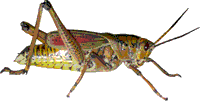Entomology Collections, General

Entomology Papers from Other Sources
Document Type
Article
Date of this Version
1999
Abstract
The sound or `buzzing response' from groups of fifteen worker honey bees, Apis mellifera L., to the presentation of isopentyl acetate, an alarm pheromone component, was recorded through a microphone connected via a digital±analogue converter into a computer. The effects of ingested biogenic amine precursors 5-hydroxytryptophan, L-DOPA and tryptophan were tested on three variables measurable from the sound traces: onset of the buzzing response after presentation of the pheromone stimulus, the duration of the buzzing event, and the maximal sound frequency produced during the buzzing event. Bees fed high doses of 5-hydroxytrytophan were found to react significantly more slowly and with a significantly lower maximum frequency than bees that were only fed sucrose controls. Bees fed DOPA were no different from controls for any of the variables measured, and bees fed tryptophan were so hyperactive that reliable responses to the presentation of alarm pheromone could not be made. Finally, the brains of worker bees fed these different precursors were examined for content of various neurochemicals. Bees fed 5-hydroxytryptophan were found to have dose-dependent elevations of both 5-hydroxytryptophan and serotonin within their brains. Bees fed tryptophan were found to have dose-dependent elevations of tryptophan and kynurenine in the brain but no change in brain serotonin. Bees fed DOPA had dose-dependent increases in DOPA and dopamine levels within their brains. These results suggest that the hyperactive condition results from kynurenine metabolism, and the reduced response to alarm pheromone is related to serotonin metabolism.


Comments
Published in Physiological Entomology (1999) 24, 285-291.